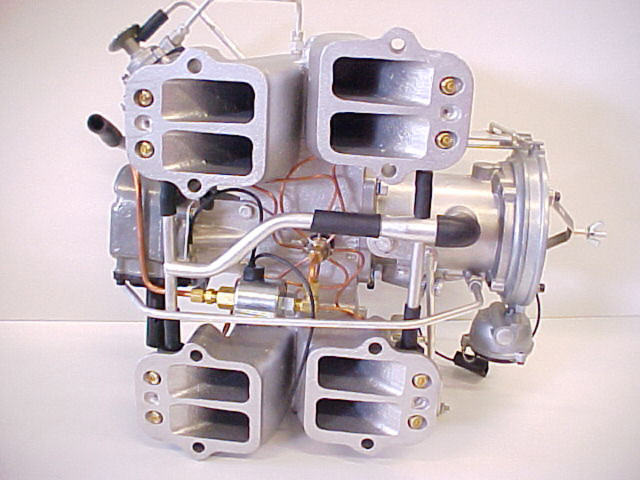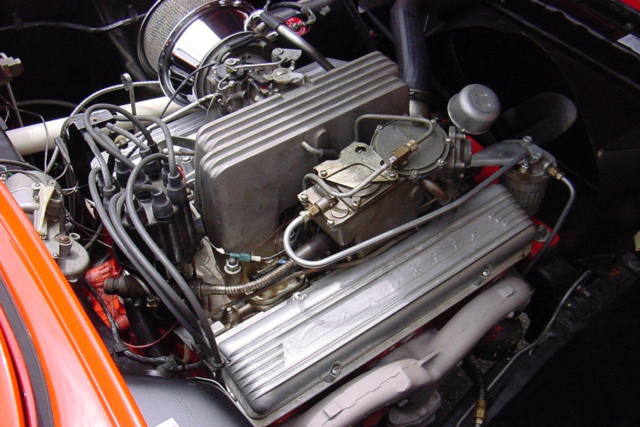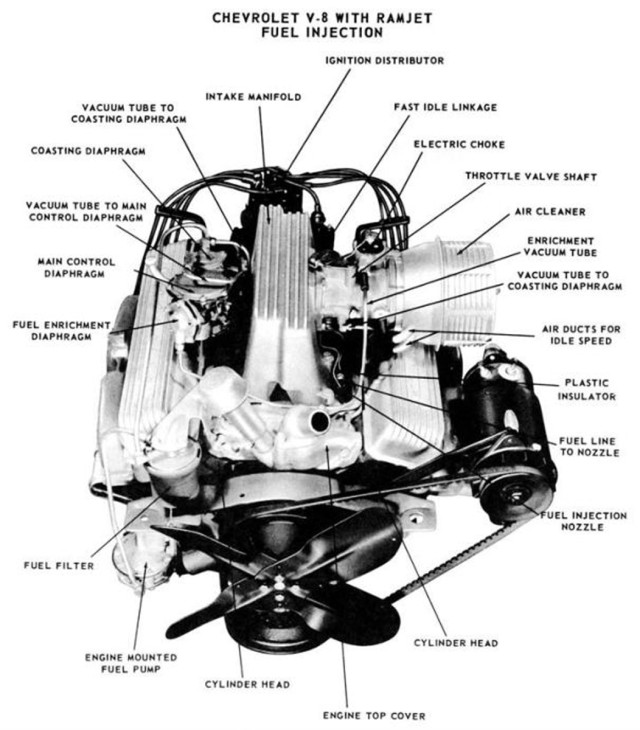For this Throwback Thursday, we take a trip back to 1957, when the big news from Chevrolet [2] was the introduction of their Ramjet fuel injection. The unit was initially designed and developed by GM’s Rochester carburetor division, with the help of John Dolza, E.A. Kehoe, Donald Stoltman, and Corvette chief engineer Zora Arkus-Duntov. The Ramjet was reported to have several advantages over a carburetor: increased power, instant accelerator response, faster cold starts, smoother engine warm-ups, elimination of carburetor icing, and better overall fuel economy.
When Chevrolet became actively interested in fuel injection, they were initially looking for an induction system to place on the Corvette. Chevrolet felt that their performance car needed a performance-oriented fuel delivery system, in order to realize the full potential of the car’s engine to deliver higher-than-stock performance.
Before an initial system was utilized, there were actually two types of fuel injection systems that were being tested. One was at the GM Tech Center, and another at Rochester carburetor building. The system being developed by the engineering staff at the GM Tech Center, was a continuous-flow design. This system employed nozzles/injectors located directly above each cylinder, spraying fuel into the intake port. The second system being engineered was a timed-injection design. Timed fuel-injection systems inject a measured amount of fuel in timed bursts, that are synchronized to the intake stroke of each piston within the engine. While timed injection is a more precise form of fuel injection, it is also a lot more complex than a continuous-flow system. The continuous-flow system was ultimately chosen, primarily because of its simplicity and cost. In a relatively short period of time, the engineers put together their fuel-injection system that appeared to be relatively inexpensive to manufacture, and promised significant power gains. Unfortunately, initial dyno testing showed the system to show no increase of power over a standard, 283 cubic-inch, dual-carbureted V8. It was apparent that more testing was required. Eventually, Chevrolet and the Rochester division came up with a workable system that not only increased top-end power, but spread that power over a wider RPM range.
 [4]
[4]Image: www.curbsideclassic.com [5]
Soon after being released, reliability problems surfaced, and combined with the option’s high price tag (approximately $500 at the time), fuel injection became a scarce option. In 1957, only 240 units were installed in a total production run of 6,339 Corvettes. Ramjet fuel injection was subsequently dropped from Chevy’s other passenger car lines after 1959, though it remained a Corvette option through 1965.

